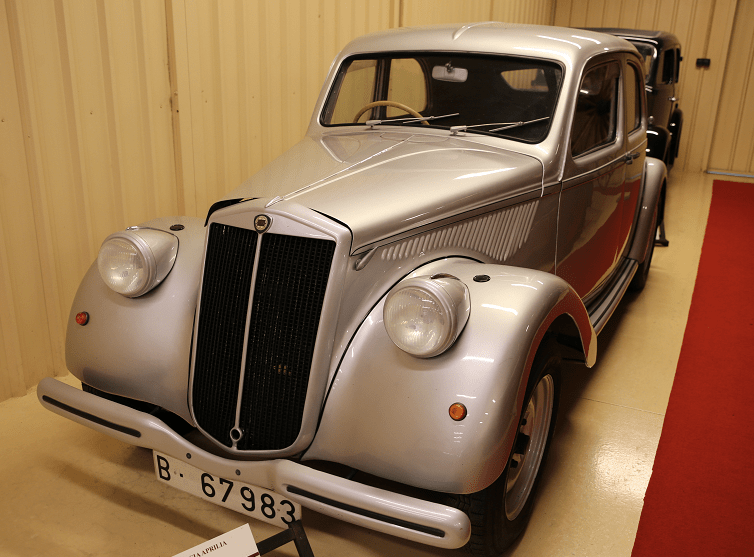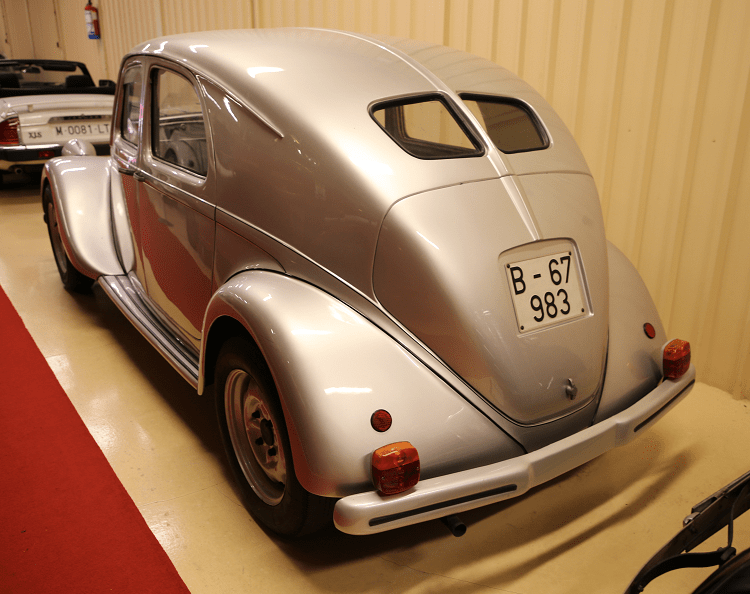The Italian Lancia Aprilia from 1940, 1436 cc, max. speed 125 km/h
The Lancia Aprilia (1937–1949) is a family car manufactured by Lancia, one of the first designed using a wind tunnel in collaboration with Battista Farina and Politecnico di Torino, achieving a record low drag coefficient of 0.47. The berlinetta aerodinamica was first shown in 1936.
Production commenced in February 1937, the month in which the firm’s founder died: this was the last of Vincenzo Lancia’s designs, featuring four pillarless doors. The first series (mod. 238, 10,354 units, 1937–39) featured a 1,352 cc V4 motor providing 47 PS (35 kW).
The second series (mod. 438, 9,728 units, 1939–49) had its engine capacity increased to 1,486 cc which provided 48 PS (35 kW). A Lusso model of this second series was also offered as well as a lungo (lengthened) version (706 made, 1946–49). A total of 20,082 cars and 7,554 additional chassis for coach built bodies were produced in Turin along with about 700 in France.
With the Aprilia Lancia followed their tradition of offering cars with the steering wheel on the right even in markets seen by other manufacturers as left hand drive markets.
Outside the UK and Sweden customers increasingly picked the optional left hand drive versions, however.
Special designs include those by Ugo Zagato (1938), a Carrozzeria Touring convertible, the army’s Torpedo militare (World War II), a Luigi Pagani-tuned barchetta bodied by boatbuilders Riva di Merate on a pre-war chassis (1946), a Bertone convertible (1947), one of Michelotti’s first, while at Vignale (1949).












